Approaching the abandoned ski tow in Coire na Ciste two weeks ago, partially concealed by the rows of abandoned chairlift seats, three men in flak jackets, each with a camera whose lense was the size of a telescope, were reclining on the ground. Two of them had come to Speyside from the south east of England to watch birds and had spent half the day are the Coire na Ciste carpark getting to know the Ring Ouzel. On an average year I see a few Ring Ouzel, but always around boulderfields and often under crags, although these birds are normally associated with montane scrub zones. Cairngorm is a good place to see them because the forest is growing back.
An hour later we had wandered up into Coire Cas where we saw first an adult then the chicks
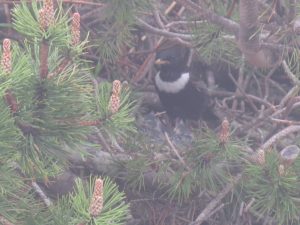
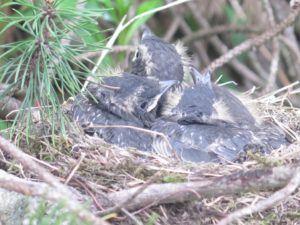
Brilliant, ring ouzel in montane scrub! It got us thinking. What an opportunity missed. It would have been perfectly easy to put a camera on the nest and relay the photos to the Day Lodge. Do that and suddenly tourists would have a reason to be there, even when the cloud was down as on our visit. Something far better than the funicular – it had us grinning for the rest of the day and not just because we had got better views than the men with enormous cameras. Visitors might go into the cafe afterwards to have something to eat or even a drink to celebrate. Travel to Speyside to see Osprey at Boat of Garten, Peregrine at Aviemore (this summer you can watch them by video link from the Youth Hostel), Ring Ouzel at Cairngorm and, here’s hoping, Hen Harrier at Newtonmore. Better still though, imagine the whole of the lower part of Coire Cas was covered in montane scrub, the numbers of Ring Ouzel – which are in serious decline nationally – might increase and people could just wander along paths or up through the pistes and see them like we did.
Now in general I am opposed to planting on the edges of forest which are relatively natural and capable of regenerating naturally as the Caledonian pinewoods are doing on Cairngorm. Speeding up rewilding is likely simple to create habitats the way we, or the powers that be, think they should be. A form of gardening, however sophisticated. But Cairngorm I think is different.
It is ecologically different because the soils and ground vegetation have for a long time been affected by intensive human use and now in places, as in the bulldozing done by Natural Retreats, in effect destroyed. In destroying these soils and the ground cover, erosion is bound to increase and the chance of a major catastrophic event, such as the whole slope failing, more likely. Planting trees that will develop into montane scrub won’t do any more damage on areas which have been extensively modified and could help stabilise them. There is even guidance on how to do this http://highlandbirchwoods.co.uk/UserFiles/File/publications/Montane-Scrub/guidance.pdf
Cairngorm has also been subject to a number of tree planting experiments which provide precedents, the latest of which show that a montane scrub zone could probably be well established in 10 years.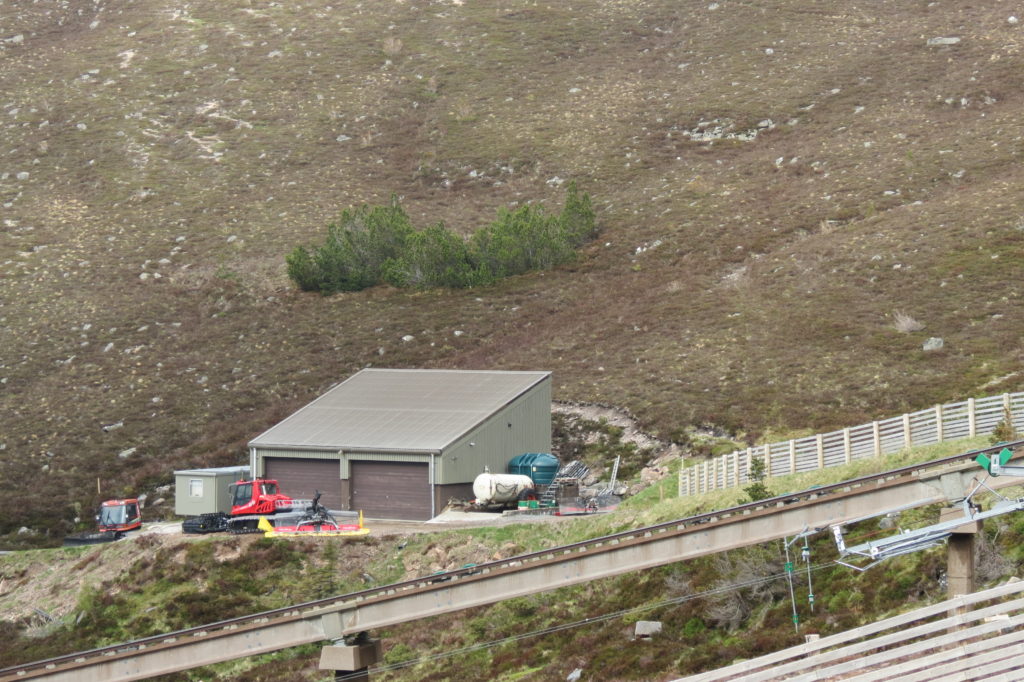
These lodgepole pine – non-natives – were planted by an employee of the then Cairngorm ski lift company. Guerilla gardening!
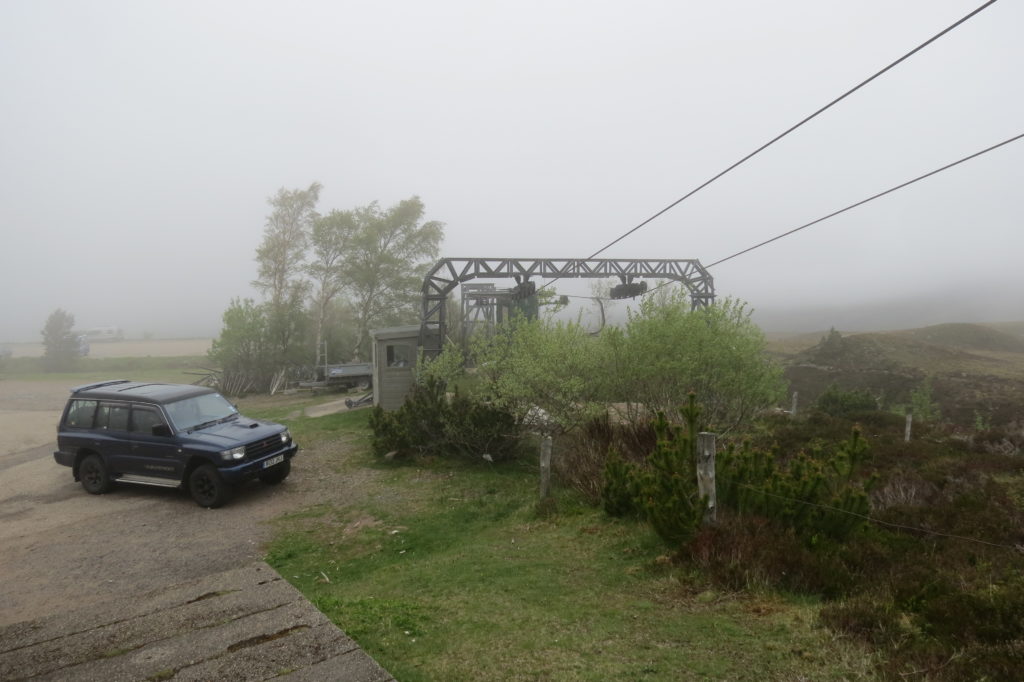

Trees here are unlikely ever to grow to full height, unless global warming ends the harsh winters and wind speed decreases, but the photos show that a planted montane Alpine scrub zone in Coire Case could become well established in relatively short periods of time.
 While there is some natural regeneration in the ski area, this has been limited, probably in part due to accidental destruction by ski machinery and skiers. Planting trees behind the solid new fences would offer them protection from this threat but in time soften the harsh linear lines of the fencing improving the landscape. In time, the trees might provide an effective alternative to snow fencing.
While there is some natural regeneration in the ski area, this has been limited, probably in part due to accidental destruction by ski machinery and skiers. Planting trees behind the solid new fences would offer them protection from this threat but in time soften the harsh linear lines of the fencing improving the landscape. In time, the trees might provide an effective alternative to snow fencing.
There is nothing revolutionary about this idea. Look at similar ski areas in Norway and Canada and the runs are often through forest or montane scrub which help trap the snow and look much better. Imagine if trees had been planted at the time of the construction of the funicular, this area would have been transformed.
The potential attraction of a montane scrub zone is not just limited to the Ring Ouzel and trees. At present there is very little montane scrub in Scotland due to the long history of overgrazing and the best such habitat at Inshriach is inaccessible to the general tourist. If a montane scrub zone was planted here it would provide an attraction for the general tourist which they could not see anywhere else.
Indeed, at the time of the funicular construction, the staff at Cairngorm made a serious attempt to promote understanding of montane scrub zone. While a lot of the interpretation that was developed then is now sadly neglected, it points the way and some of it could still be used.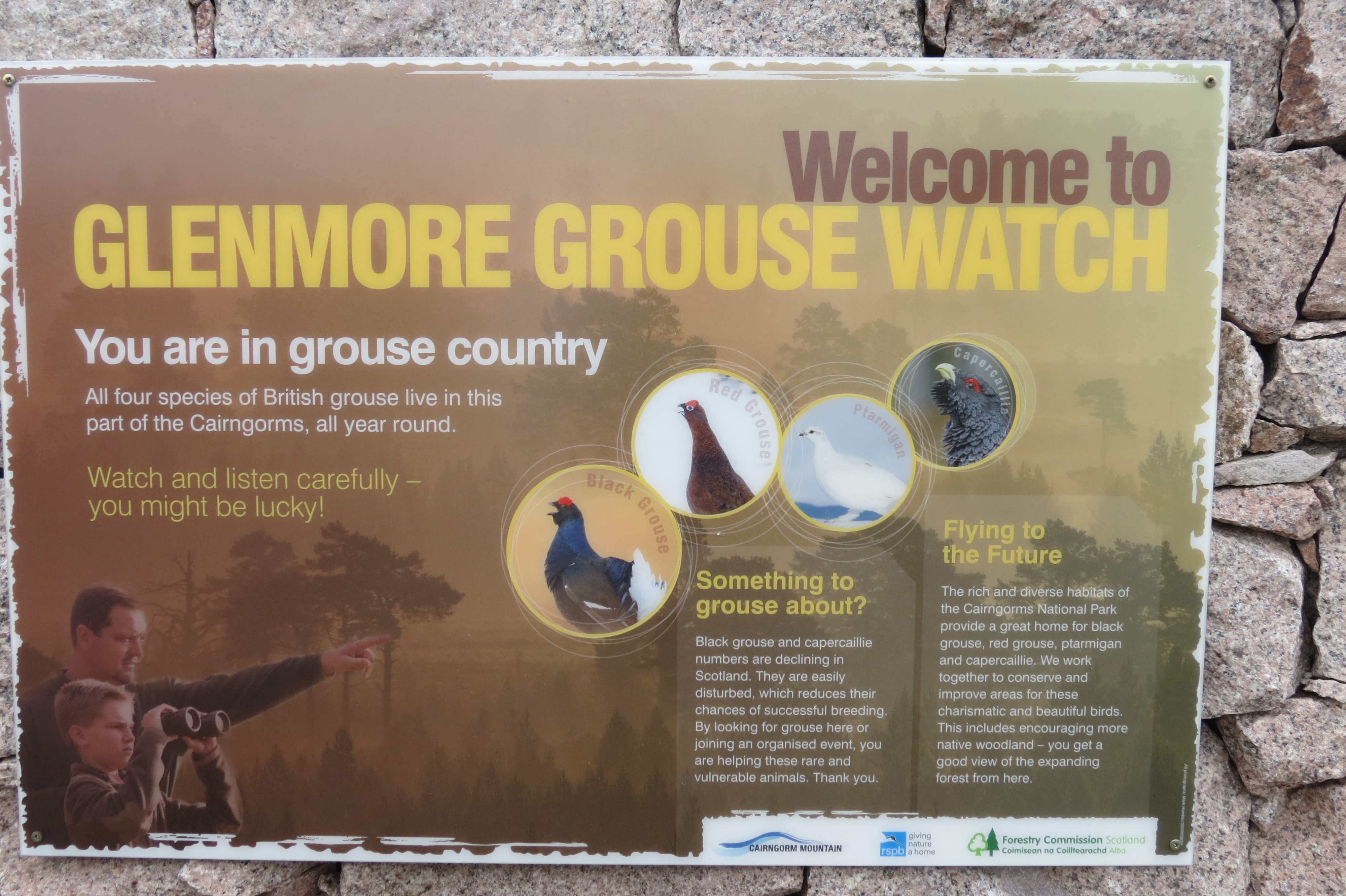
One of a number of signs in the “viewing” station on the edge of the Coire na Ciste carpark
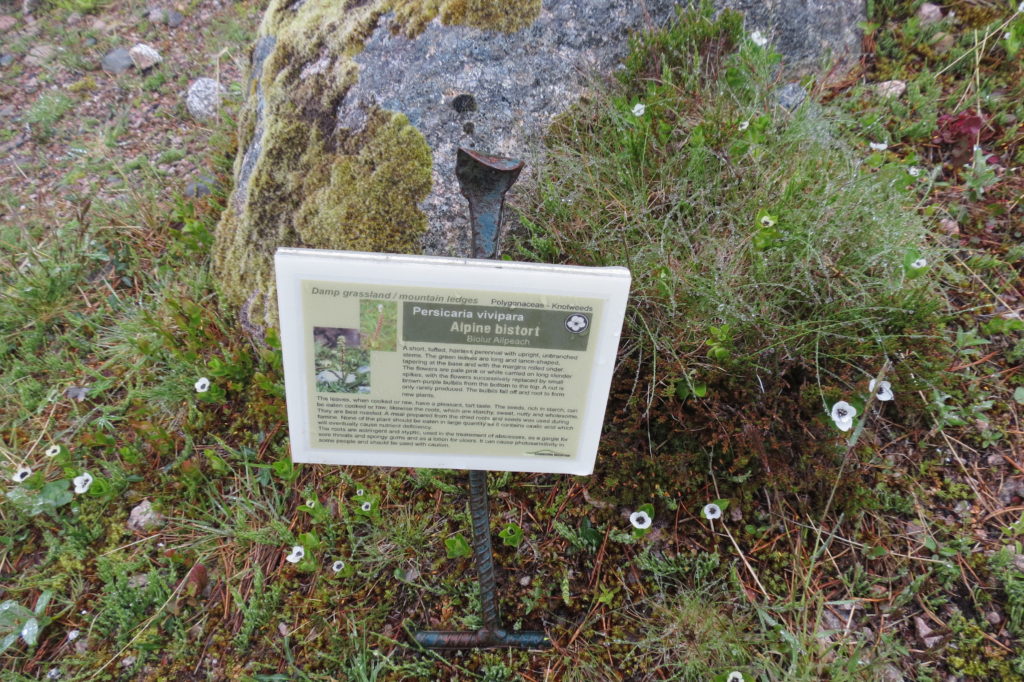
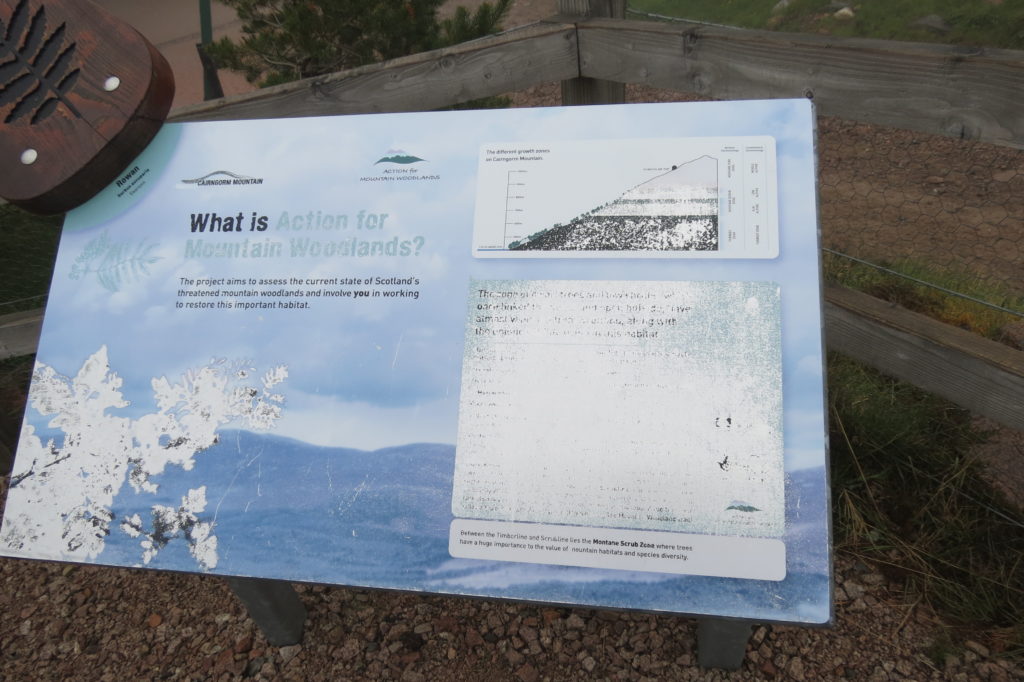

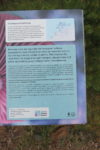
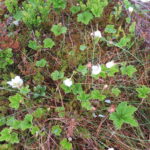
There are still some very informative signs, including ones comparing Cairngorm with similar mountains in other parts of the world. At present almost all the interpretation is in the neglected “Alpine” garden above the Day Lodge. There is scope to extend this onto the ski slopes in Coire Cas where its possible even now to see plants that the general tourist is unlikely to see anywhere else. Some further planting of Alpine plants in suitable places along sections of the existing paths and tracks in lower Coire Cas could create an attractive trail like some of the Alpine gardens on the continent which are much larger in scale than the current one in Coire Cas.
The creation of montane scrub habitat in Coire Cas could help counter the steady drop in the number of visitors using the funicular. This has approximately halved since it was constructed and continues to threaten the whole financial viability of Cairngorm which, on the current model, depends on visitor numbers. Visitors coming to the ski area to see the wildlife won’t in themselves rescue what is a white elephant but it could be part of a different model of sustainable tourism which is based on recreational enjoyment of the natural environment. It might even put the “natural” back into “Natural Retreats”.
In the past the primary concern about attracting visitors to Cairngorm has been about the serious threat that large numbers of people would have to the uppers parts of the mountain and the Cairngorms plateau. This is why the funicular is to all intents and purposes a closed system in summer. Attracting people to visit a montane scrub zone in Coire Cas though is unlikely to have any impact on the plateau. The vast majority of people would be what I would loosely describe as “general tourists” who tend to do short walks. It should not be difficult to keep them in Coire Cas through path signage and interpretation. Hillwalkers who wanted to see the montane scrub would proceed up the hill anyway and for those wanting longer walks, walking back into Glenmore will most of the time be the more attractive option. I don’t think there is much more likelihood of the general tourist heading for the plateau after seeing the montane scrub zone than there is now of then general tourist travelling to the top of funicular and liking the view so much that once they have been taken back down they decide to walk back up on their own two feet.
I have tried in this post to put the argument for the creation of a montane scrub zone in Coire Cas through planting trees and some plants. This would reduce the impact of the ski development on the landscape, improve the skiing, improve habitats for wildlife and create a reason for summer visitors to come to Cairngorm. The evidence of the destruction in Coire Cas suggests then neither Natural Retreats nor Highlands and Islands Enterprise are fit to deliver such a vision and that there is a strong argument to integrate management of the ground in the ski area with that in Glenmore below.

At Haweswater the RSPB is starting a “Mardale Mountain Garden” area next to the path and near to the car park. “The crags of Harter Fell and around Blea Water are botanically really rich, but restricted to inaccessible crags by grazing. [The plan is] to encourage and plant some of these species to recreate what the fells might look like in the absence of grazing. In the longer term, we could provide some interpretation to let visitors understand what they are looking at and to communicate some of the challenges associated with upland restoration.”
Naturally, I agree with all the main points of this article and more especially with the comments in the last paragraph. At present there has been no response from the Cabinet Secretary for the Environment, Roseanna Cunningham and only a deflective, Yes Ministeresque reply from the civil servants assisting Rural Affairs Minister and local MSP , Fergus Ewing. I hope both will however, come round to seeing that, instead of deriding and discounting the international analogues alluded to, by both Nick and myself ( eg http://www.whiteface.com/mountain ),
the way forward is to engage with these and the expertise in Scotland in the carbon-sequestrating, job-creating, and environment-saving solution of the establishment of sub-alpine and upper montane woodland–a direction Mother Nature is trying to go in anyway.
I am really concerned about this approach to managing Cairngom. You say that “ring ousels are normally associated in montane scrub”. However Scotland has not had montane scrub for thousands of years (see Duncan Poore’s comments in the 1997 SNH montane scrub conference), so in Scotland the ousels are NOT (never have never been??) associated with montane scrub (Incidentally, my brother bivvied at the top of Liathach recently and was kept awake by a ring ousel). It is like saying red deer are woodland animals, when the evidence of one’s eyes shows they in fact have a wide ecological amplitude …
Norway is not Scotland and Scotland is not Norway: in fact, why should Scotland not be more natural than Norway because Scotland has maintained a healthy population of red deer throughout the postglacial period? – although there were less deer in the late 1700s, perhaps because at the time of the Jacobite uprisings there were a lot of Jacobites in the hills catching them to eat. And of course, where sheep came in, deer tended to decline. However there were a lot of deer at Mar Lodge in 1618 as shown by Taylor the Water Poet’s account of a deer hunt in 1618, and Robertson, the botanist, often mentions the presence of deer on the hills during his botanical surveys 1767-71. Incidentally, Taylor, who went over Mt Keen on horseback in 1618 (the first Munroist??) talks about long heather, with no mention of scrub.
Unfortunately in Scotland conservationists tend to go in for wildlife gardening, trying to promote the species they like – such as Scots pine, aspen, trees generally, montane scrub, capercailzie, ring ousels … Nobody seems to be willing just to let the hills be – to let them be wild, to let them be natural: to let Scotland be Scotland. This applies equally to conservation NGOs and grouse moor managers; the traditional stalking estate is probable the landholding-type which is currently retaining the most naturalness. The krummholtz developing around the Cairngorm ski area owes its origin to the seeding from massive pine plantations in the 1900s and the absence of red deer owing to human disturbance. Nothing natural about this …
Why the three columns?
A glitch which I will try and sort!
it’ll be alright then James, as no montane scrub/krummholz will develop in the absence of grazing and burning–nothing to see here–move on.
so James, what is natural about what Natural Retreats inherited and have done recently, what is natural about sheep and goats or the burning regime associated with them?
James, I appreciate there is a debate about natural processes, the extent to which Scotland once had trees and the role of herbivores and while we both would generally like to see more land where natural processes dominated we have different ideas of what that might look like. I also agree that in Scotland Ring Ouzel are not associated with montane scrub in Scotland – as I said I had only ever seen them in boulderfields and rocky places before – but I would hazard a guess that if we had montane scrub we might see a lot more of them. My argument is that would give a lot of people pleasure and might provide a partial solution to the very specific problems in the Cairngorm Ski Area. I am generally against “gardening” but the ski area is such a mess we need to think of something new. Herbivores, albeit highly managed, are already part of the attraction. Following your thinking I guess your response might be that they should be allowed to roam over the ski area?? That would be an alternative but would not address any of the landscape issues which montane scrub could provide a solution to. Prompted by the Ring Ouzel, I was trying to think of solutions for Cairngorm that combined that I would like to see for recreation, wildlife and landscape. Nick
I agree that entirely that infrastructure in the hills, including all hill tracks, are a major detractor of the wildness of the Scottish Highlands and personally would like to see a ban on new infrastructure. However, hiding the developments that are there by changing the whole ecology of the uplands to me seems the wrong approach: and leads to the mindset in the public that the Scottish hills ‘should be wooded’ – which over time will lead to more and more loss of the distinctiveness of the Scottish hills. We should not hide development, but where we have been unsuccessful in arguing against it, ensure it is carried out and the land revegetated to the highest standards.
And Ron, the hills would still be moorland whether managed or not: burning merely changes the small-scale patterning of vegetation (generally making it more species-rich in terms of vascular plants). Personally I am against intensive grouse moor management (see my New Paradigm) – but the landscape would still be moorland without grouse shooting, Unfortunately conservationists prefer trees and tend to devalue moorland – even though we are the world centre for temperate moorland.
In my view, nature conservation should not be about our personal preferences, on how species-rich an area is, on how many species we can see, but on ensuring we maintain the natural characteristics of the area – which may be very species-poor. Much of the Arctic, for example, is miles of not much!
James, where we disagree is on what the natural characteristics of an area might be. You are asserting that in Scotland this would be moorland because of the large number of herbivores which you see as a good thing. I don’t see the the large number of herbivores as “natural” but a result of human land management. While herbivore numbers have fluctuated historically they are have been much higher in the last 200 years due to intensive management from humans (both sheep and deer) and if either we reduced herbivore numbers ourselves or re-introduced predators such as wolves there is plenty of evidence that trees would come back in many places. There are though clearly some places, for example the bogs of the higher ground on the west, where it is very unlikely that trees would grow unless our climate was to change totally. There are also other areas where what would determine whether trees replaced moorland would include factors such as patterns of human and other predator hunting and occurrence of natural fires. I don’t understand how we could know how this would turn out but to suggest this is entirely about matters of personal preference seems to me wrong and I would be interested to know why you think your own position, which is as I understand it is to attribute value to herbivores, is free of personal preference?
Because we have severely reduced or made most of our large herbivores extinct in Europe, when we find places where there are still ‘quite a lot’ (eg.red deer in the Highlands), instead of saying “great, a conservation success story”, we say “terrible, deer are vermin because they eat trees”. And we go to Norway where most have been hunted to extinction, and think this is natural. But when we go to the Serengeti plains and see thousands of antelope, wildebeest, impala, etc, we do not say “there are too many animals because they are preventing the area being wooded”. Why the difference? Were there too many buffalo on the American prairies? And what impact would the huge herds of herbivorous dinosaurs have had? In terms of wolves, 10,000 years of coexistence of wolves and deer in Scotland did not prevent natural woodland loss: what makes you think it would be any different today? Herbivore numbers in natural systems are ultimately determined by food availability; on Rum this indicates roughly 18 deer/sq kim. The vegetation just has to like or lump it! It is us who want trees – in places where nature would be unlikely to have provided it naturally. See my recent article in Conservation Land Management on all this.
James, you ask what is different about Scotland and the Serengeti or plains of North America but why are you comparing Scotland to those places rather than say Norway? We don’t have large plains in Scotland except round the coasts maybe and those have always been relatively settled so wild herbivore numbers have been small. The herds of deer here have never remotely resembled those on the examples you give but of course now probably greater than they have ever been. So what is natural deer hunted to extinction or trees browsed/cleared to extinction? I don’t see this as “either”/”or”. I also disagree with your claim herbivore numbers are ultimately determined by food availability – they are also determined by predators which is why so many species of herbivore are now extinct.
In terms of three columns, Nick, I think it happens when I use carriage returns. Will stop using them.
My main point, Nick, is that large herbivores are keystone species, shaping the landscape, whether in Scotland or Serengeti; they also have a huge role in nutrient cycling, helping maintain the fertility of the landscape. For some reason, if deer eat trees, we see this as a ‘bad thing.’ There is no evidence of predators making herbivores extinct. Do owls control lemmings, or lemmings owls? I will copy you a recent essay of mine (soon to be published) on why Scotland is not like Norway. I am currently reading Fraser Darling’s ‘West Highland Survey’, and I think his interpretation of the drivers of Highland ecology are just wrong: the Highlands are not an ecologically devastated landscape! Have your read Milner et al’s study of the Letterewe Estate: “A Red Deer Herd and its Habitat” (2002)? Gives a very different take on the Highland landscape compared to Fraser Darling.
James, I am not denying large herbivores can shape the landscape but the extent to which they do depends on a whole number of factors which are why we have both forest and grasslands in different parts of the world and indeed within much smaller areas like Scotland. Our native herbivores were larger when there were fewer of them and more trees – of course deer eat trees, the problem is there are so many of them we have reduced our landscape to uniformity rather than diversity and this stems from removal of natural predators (wolves keep deer moving allowing forest to grow in some places, reduce in others) and our hunting laws that have stopped most human predation on red deer. Nick
No evidence for the above – merely a belief!
James, there is documented evidence for example on Breadalbane estate records where you can see recorded everything from anti hunting measures (the employment of watchers) to measurers to promote deer numbers including removal of agricultural tenancies around Loch Tulla. This led to a significant increase in deer numbers that what later reversed in parts of the estate (not Rannoch moor which was kept for hunting) through the introduction of new sheep breeds. The historical evidence shows thats it people as hunters/predators and farmers in Scotland who have determined numbers of large herbivores and your depiction of Scotland as some sort of Serengeti is as far from the truth as the assertions that everywhere was covered in caledonian forest.